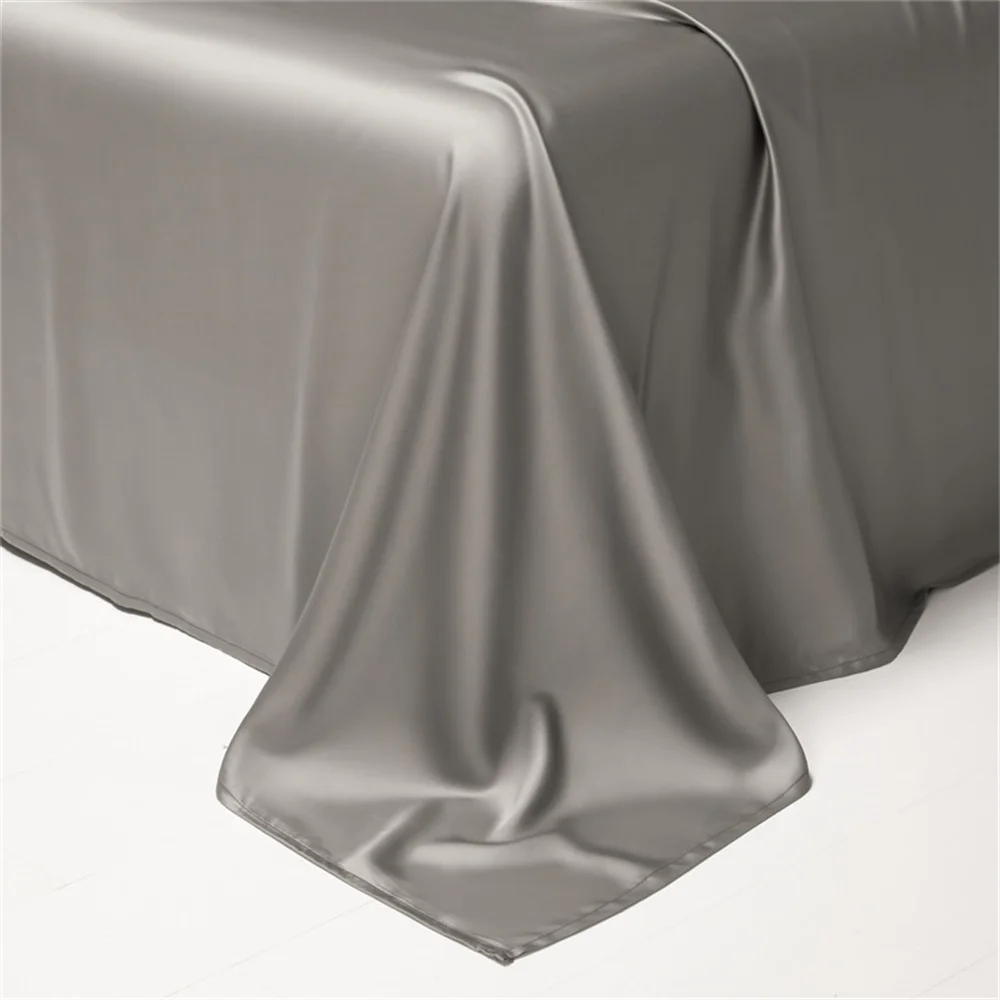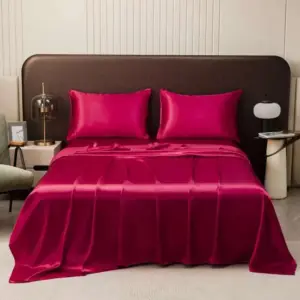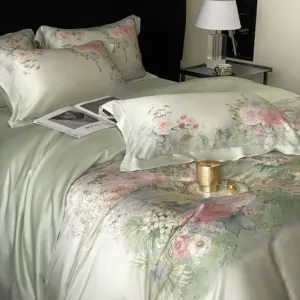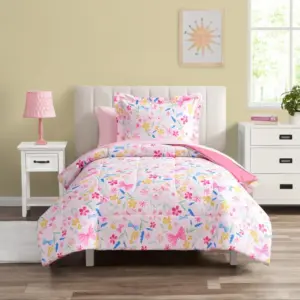Introduction: Understanding Your Bedding Options for Better Sleep
The quality of your bedding plays a surprisingly significant role in how well you sleep each night. When your body rests against luxurious, comfortable materials, you’re more likely to fall asleep faster, stay asleep longer, and wake feeling refreshed. This connection between bedding and sleep quality makes your choice of sheets far more important than many realize.
Among premium bedding options, silk and cotton stand out as two natural fibers with distinct characteristics. While both offer comfort and durability, they differ dramatically in feel, care requirements, price points, and the specific benefits they provide. This leaves many shoppers wondering which material would best suit their unique sleeping needs and lifestyle.
Whether you’re looking to upgrade your sleep experience or replace worn-out bedding, understanding the differences between these materials is essential for making a wise investment. The amazing benefits of mulberry silk sheets extend beyond mere luxury, while cotton’s versatility makes it a perennial favorite.
This comprehensive guide will objectively compare silk and cotton bedding across all critical factors, helping you determine which option aligns best with your sleep preferences, budget, and lifestyle needs.
Understanding Silk Bedding: Nature’s Luxury Fiber
Silk is a natural protein fiber produced by the Bombyx mori silkworm, created when these creatures spin cocoons as part of their metamorphosis process. This remarkable material has been treasured for thousands of years, beginning in ancient China where its production was once a closely guarded secret.
The silk production process is labor-intensive and delicate. Silkworms feed exclusively on mulberry leaves until they’re ready to create their cocoons. These cocoons are carefully harvested, and the long, continuous fibers are unwound, cleaned, and eventually woven into fabric.
What makes silk truly special is its unique protein structure. These proteins create an incredibly smooth surface at a microscopic level, giving silk its characteristic lustrous appearance and buttery-soft feel. Additionally, silk contains 18 amino acids that naturally align with human skin, contributing to its hypoallergenic properties and skin benefits.
Types of Silk Used in Bedding
While several silk varieties exist, Mulberry silk stands out as the premium option for bedding. What makes mulberry silk special is its unparalleled smoothness, strength, and consistent color—qualities that result from silkworms fed exclusively on mulberry leaves. Other types include:
- Tussah/Wild silk: Rougher texture, produced by wild silkworms
- Habotai silk: Lighter weight, often used in more affordable options
- Charmeuse silk: Satin-like finish, common in luxury bedding
Understanding Momme Weight
Rather than thread count, silk quality is measured by “momme weight” (pronounced “moe-me”), which indicates the density of the silk. Specifically:
- Momme measures the weight in pounds of a piece of silk sized 45 inches by 100 yards
- For bedding, the optimal range is 19-25 momme
- Lower momme (16-19): Lighter, more delicate, less expensive
- Higher momme (22-25): Heavier, more durable, more luxurious
The most popular weaves for silk bedding include charmeuse (with its characteristic sheen on one side) and habotai (with its more balanced texture). Unlike cotton’s cellulose-based structure, silk’s protein composition gives it unique properties we’ll explore when comparing the two materials.
Browse our collection of premium mulberry silk sheets to experience the luxurious difference yourself.
Understanding Cotton Bedding: The Versatile Classic
Cotton is a natural cellulose fiber harvested from the seedpod of the cotton plant. This versatile material has been a bedding staple for centuries, prized for its combination of comfort, durability, and relative affordability.
The cotton production process begins with harvesting the fluffy fibers (called “bolls”) from the plant. These fibers are then cleaned, carded (aligned), spun into yarn, and finally woven into fabric. The resulting material is naturally breathable, highly absorbent, and remarkably durable—qualities that have made it the world’s most popular bedding material.
Types of Cotton Used in Bedding
Not all cotton is created equal. The variety and quality significantly impact the final product’s feel, durability, and price:
- Egyptian cotton: Considered the gold standard, featuring extra-long fibers (staples) that create exceptionally soft, strong fabric.
- Pima/Supima cotton: American-grown long-staple cotton with similar premium qualities to Egyptian cotton.
- Upland cotton: The most common variety worldwide, with shorter fibers that create good but less luxurious fabric.
- Organic cotton: Grown without synthetic pesticides or fertilizers, appealing to environmentally conscious consumers.
Understanding Thread Count
Cotton quality is primarily measured by thread count—the number of threads woven into one square inch of fabric:
- For percale weaves: 200-300 thread count offers optimal breathability and crispness
- For sateen weaves: 300-600 thread count provides the characteristic smooth feel
- Beyond 600: Often achieved through creative counting methods rather than actual quality improvement
- Very high thread counts (1000+) may actually indicate lower quality if achieved through thread manipulation
Cotton Weaves
Cotton’s versatility allows for various weaving patterns that significantly affect the final feel:
- Percale: A one-over, one-under weave creating a crisp, cool, matte finish
- Sateen: A three-over, one-under weave resulting in a smoother, more lustrous surface
- Flannel: Brushed cotton with a soft, fuzzy surface ideal for cooler temperatures
- Jersey: Knitted rather than woven, creating a t-shirt-like stretch and casual comfort
These fundamental differences in structure and processing between silk and cotton create distinctly different sleep experiences, as we’ll explore in our detailed comparison of silk vs cotton bedding.
The Definitive Comparison: Silk vs Cotton Bedding
1. Comfort and Feel: The Tactile Experience
The most immediate difference between silk and cotton is how they feel against your skin. This tactile experience significantly influences your overall comfort and sleep quality.
Silk offers an unmistakably luxurious sensation. Its incredibly smooth surface almost seems to float against the skin, creating minimal friction as you move. The material has a natural coolness when you first touch it, followed by quick warming to your body temperature. Its fluid drape allows it to gently conform to your body without feeling restrictive or heavy.
Cotton, by contrast, provides a more textured feel that varies significantly by weave type. Percale cotton feels crisp and cool, similar to a freshly ironed dress shirt, while sateen offers a smoother, warmer touch. This variety allows cotton to satisfy different tactile preferences.
These differences stem from their microscopic structures: silk’s protein fibers create an incredibly smooth surface at the microscopic level, while cotton’s cellulose fibers naturally have more texture. Many people find that silk sheets create less friction against skin and hair—a difference that becomes particularly noticeable for restless sleepers who move frequently during the night.
Ultimately, the “better” feel comes down to personal preference—whether you prefer silk’s unmatched smoothness or cotton’s familiar, substantial feel.
2. Temperature Regulation and Breathability
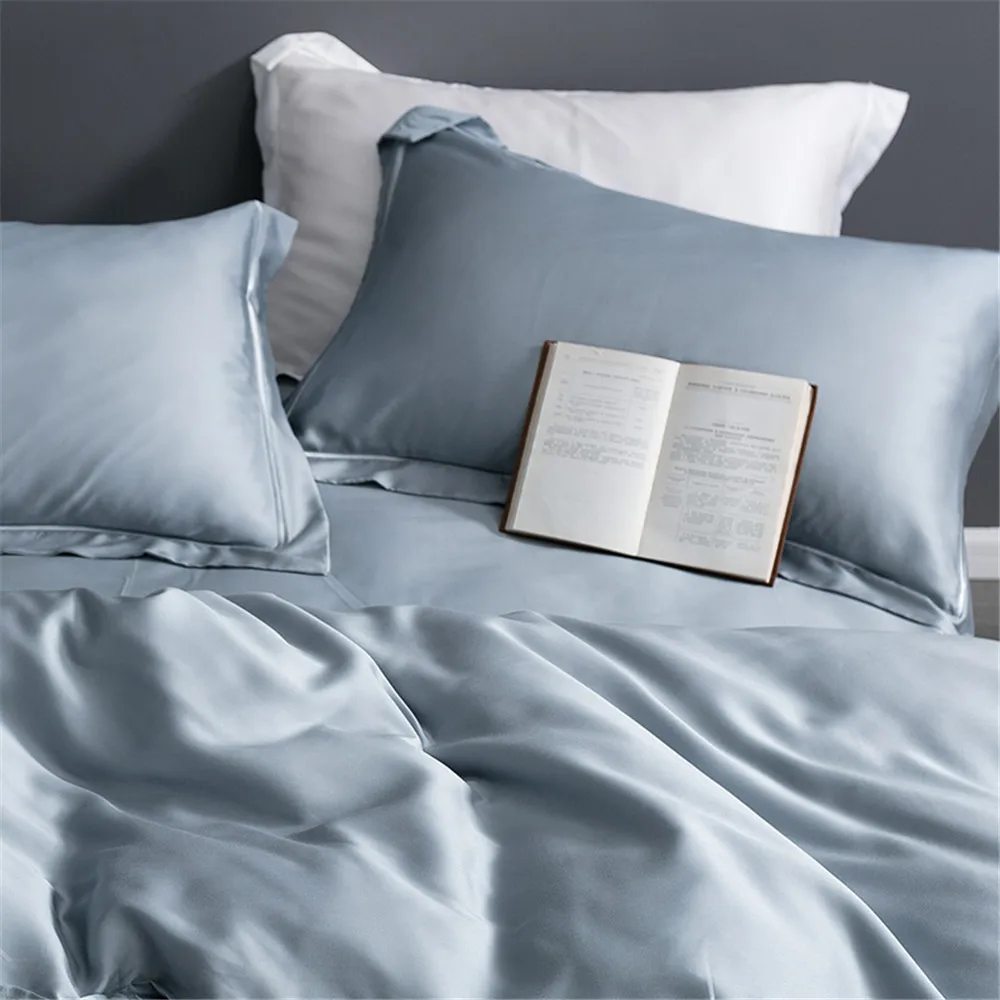
Temperature regulation is crucial for quality sleep, as your body naturally cools slightly during deeper sleep phases. The right bedding can help maintain this optimal temperature balance throughout the night.
Silk excels at thermoregulation through several natural properties:
– It adapts to body temperature, providing warmth when cold and cooling when hot
– Its protein structure allows it to wick moisture away from the body without absorbing it
– It creates a breathable barrier that helps maintain a consistent microclimate
This makes silk bedding particularly effective for temperature regulation throughout changing seasons.
Cotton functions differently:
– It offers excellent breathability, allowing air to flow freely through the fabric
– It absorbs moisture effectively, pulling sweat away from the body
– Different weaves provide varying degrees of warmth (flannel for colder nights, percale for warmer)
The scientific explanation lies in their structures: silk’s protein fibers naturally regulate temperature and manage moisture, while cotton’s cellulose fibers excel at absorption.
For hot sleepers who tend to overheat, both fabrics offer benefits—silk through temperature adaptation and moisture wicking, cotton through excellent air circulation. Our cooling silk sheets specifically address this need through optimized weight and weave.
3. Durability and Longevity: A Long-Term Investment
When investing in quality bedding, longevity becomes an important consideration for both value and sustainability.
Silk is surprisingly strong despite its delicate appearance:
– When dry, silk is the strongest natural fiber, with impressive tensile strength
– Its weakness comes primarily from improper care (harsh detergents, rough handling)
– Quality silk bedding properly maintained typically lasts 3-5 years or longer
– Maintains its appearance over time with less pilling than many other fabrics
Cotton offers different durability advantages:
– Exceptional resilience to regular washing and normal wear
– Often becomes softer and more comfortable with each wash
– Quality cotton sheets can last 2-5+ years depending on fabric weight
– More forgiving of cleaning mistakes than silk
The lifespan of both materials depends significantly on care practices. While silk requires more careful attention, this maintenance preserves its special properties. Cotton’s easier care regimen must be balanced against potentially shorter longevity for some varieties.
When calculating true value, consider both initial investment and expected lifespan. Premium options in either material often deliver better cost-per-use than cheaper alternatives that require more frequent replacement. Proper bedding can dramatically transform sleep quality when maintained correctly.
4. Care and Maintenance Requirements
Care requirements represent one of the most significant practical differences between these materials:
Silk Care Requirements:
– Washing: Hand washing ideal; delicate cycle acceptable for washable silk sheets
– Detergent: pH-neutral, enzyme-free, silk-specific detergent
– Drying: Air dry away from direct sunlight; never tumble dry
– Ironing: Low heat if necessary, with cloth barrier
– Storage: Breathable bag, avoid prolonged compression
Cotton Care Requirements:
– Washing: Standard machine wash with warm or cold water
– Detergent: Standard detergents acceptable
– Drying: Machine dry on appropriate setting
– Ironing: Medium heat as needed
– Storage: Standard folding, no special requirements
The time investment differs considerably. Cotton’s straightforward care makes it suitable for busy households or those unwilling to perform specialized maintenance. Silk requires more attention but rewards this care with preserved luxury properties.
Common mistakes to avoid with silk include using fabric softeners (which damage the fibers), wringing or twisting when wet, and exposure to direct sunlight for extended periods. Cotton is more forgiving but still benefits from avoiding bleach and excessively high drying temperatures.
5. Price and Value Considerations
The price difference between these materials is substantial and often becomes a deciding factor for many shoppers.
Typical price ranges for quality bedding sets (queen size):
– Standard cotton sheets: $50-150
– Premium cotton (Egyptian, Pima): $150-300
– Silk bedding: $300-1,000+
Silk’s higher cost stems from several factors: labor-intensive production process, limited supply, specialized harvesting and processing requirements, and the amount of raw material needed for each piece.
The value proposition differs as well:
– Silk represents a luxury investment with specific benefits for skin, hair, and temperature regulation
– Cotton offers versatility, easy care, and familiar comfort at a more accessible price point
For those who prioritize specific benefits like reduced facial creases, hair protection, or hypoallergenic properties, silk’s premium price may represent good value despite the higher initial investment. Our luxury silk bedding sets balance quality with value through careful material selection and production.
Others may find cotton’s combination of comfort, durability, and lower cost creates better overall value, especially for everyday use or guest bedrooms.
6. Health and Beauty Benefits
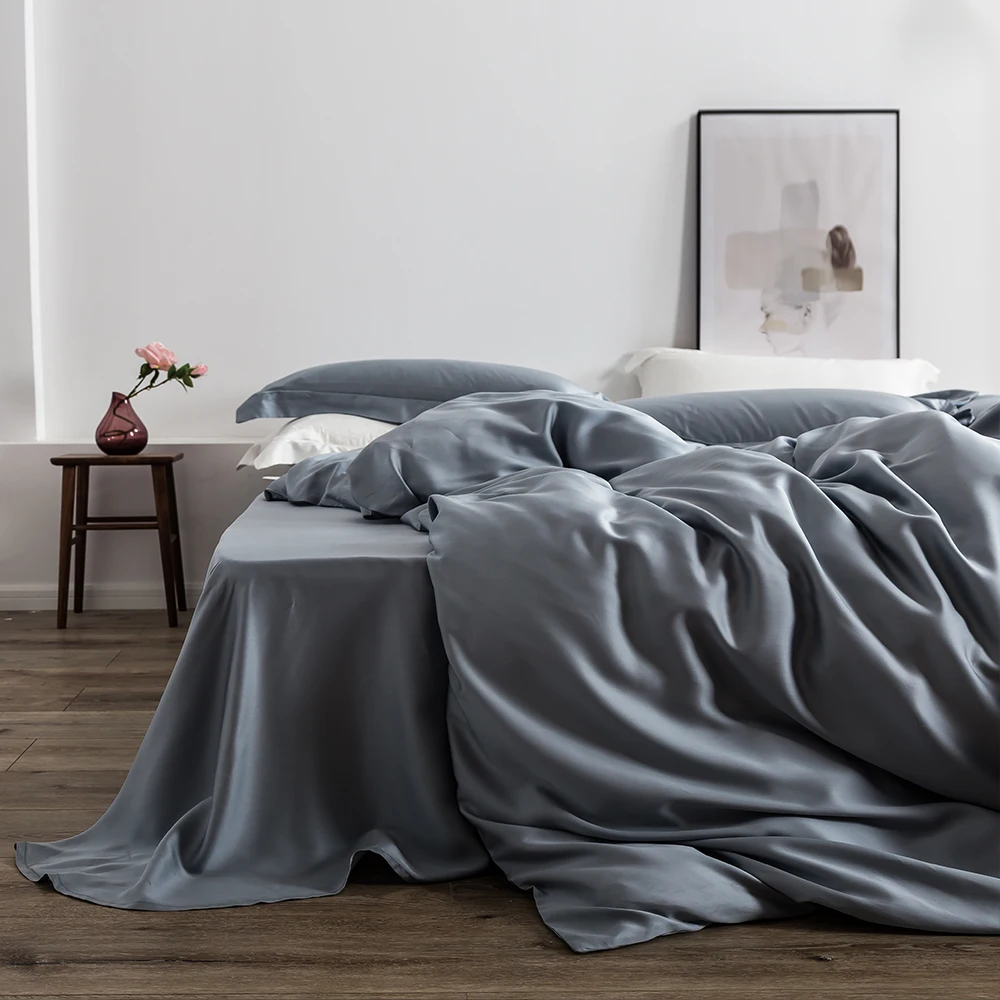
Skin Benefits Comparison
Silk offers several advantages for skin health:
– Creates minimal friction against facial skin, potentially reducing fine lines
– Doesn’t absorb as much facial moisture or expensive skincare products
– Natural hypoallergenic properties resist dust mites and other allergens
– Smooth surface benefits acne-prone or sensitive skin by reducing irritation
The mulberry silk bedding skin benefits are particularly notable for those concerned with maintaining healthy skin overnight.
Cotton interacts with skin differently:
– More absorbent, potentially drawing away natural oils
– Creates more friction against skin as you move
– Hypoallergenic options available, especially in organic varieties
– May trap more dust and allergens between washings
Hair Health Comparison
Many people notice significant differences in how these fabrics affect their hair:
Silk provides:
– Reduced friction that helps prevent hair breakage and frizz
– Better preservation of hairstyles overnight
– Less absorption of natural hair oils and treatments
Cotton typically:
– Creates more friction against hair strands
– May contribute to tangling, especially for curly or textured hair
– Absorbs more natural oils from hair
Allergies and Sensitivities
For allergy sufferers, bedding choice can significantly impact symptoms:
Silk naturally:
– Resists dust mites due to its protein structure
– Inhibits mold and mildew growth
– Contains no common allergens in its natural state
Cotton:
– Is easily washable at higher temperatures to remove allergens
– May harbor more allergens between washings
– Organic options reduce exposure to pesticide residues
For those with specific allergies or sensitivities, silk bedding for allergy sufferers offers natural advantages worth considering despite the higher investment.
7. Environmental Impact and Sustainability
Environmental considerations are increasingly important to many consumers:
Silk production involves:
– Raising silkworms on mulberry leaves (relatively low pesticide use)
– Traditional harvesting methods that end the silkworm’s lifecycle
– Lower water usage than conventional cotton
– Biodegradability at end of life
Cotton production concerns include:
– Conventional cotton’s heavy pesticide and water usage
– Intensive farming practices affecting soil health
– Chemical processing in some manufacturing methods
– Better options including organic and sustainably grown varieties
For those concerned about animal welfare in traditional silk production, vegan silk bedding offers alternatives with similar benefits.
Both materials offer more sustainable options: peace silk (allowing moths to emerge before harvesting) and organic cotton both address key environmental concerns while maintaining most benefits of their conventional counterparts.
Full-size Silk Sheets, King Size Silk Sheets, Queen Size Silk Sheets, Twin Size Silk Sheets, Washable Silk Sheets
Price range: $95.95 through $178.37 Select options This product has multiple variants. The options may be chosen on the product page100% Silk Sheets, Green Silk Sheets, King Size Silk Bedding Set, Mulberry Silk Bedding Sets, Queen Size Silk Bedding Set
Price range: $1,246.21 through $1,615.22 Select options This product has multiple variants. The options may be chosen on the product pageEucalyptus Silk Bedding Sets, Eucalyptus Silk Sheets
Price range: $360.24 through $393.60 Select options This product has multiple variants. The options may be chosen on the product pagePink Silk Sheets, Twin Size Silk Sheets
$171.80 Select options This product has multiple variants. The options may be chosen on the product pageFull-size Silk Sheets, Pink Silk Sheets
$136.31 Select options This product has multiple variants. The options may be chosen on the product pageGrey Silk Sheets, Silk Sheet and Pillowcase Set
Price range: $88.20 through $146.64 Select options This product has multiple variants. The options may be chosen on the product page
Who Should Choose Silk Bedding?
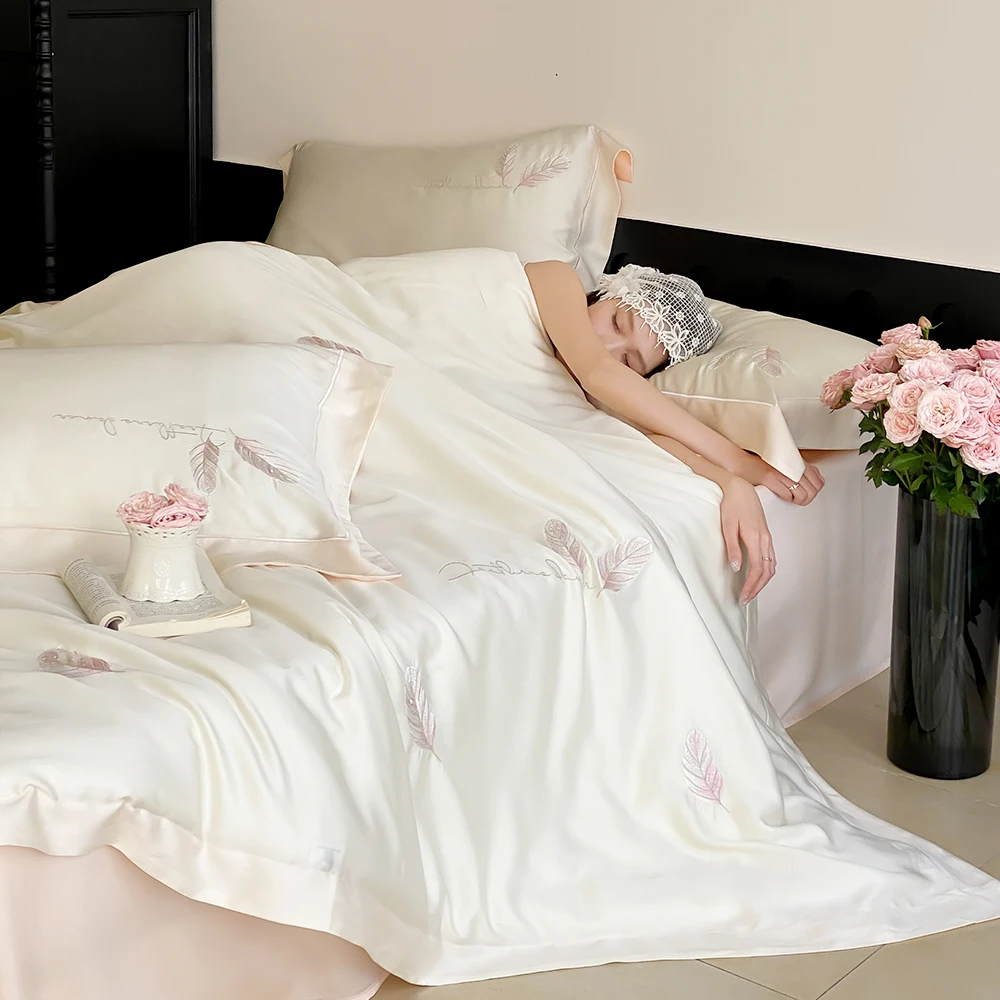
Silk bedding is particularly well-suited for:
- Luxury enthusiasts who prioritize exceptional sleep quality and are willing to invest in premium materials
- People with sensitive skin conditions like eczema or rosacea who benefit from reduced friction
- Those with allergies or asthma who need naturally hypoallergenic bedding
- Hair care devotees looking to reduce bedhead, breakage, and frizz
- Hot sleepers who appreciate temperature-regulating properties
- Anyone who uses premium skincare products and wants to maximize their effectiveness overnight
Silk excels in creating a luxurious sleep sanctuary that feels indulgent while delivering tangible benefits. Those who’ve switched to silk often note they can’t imagine returning to other materials after experiencing the complete guide to mulberry silk bed sheets and their benefits.
Who Should Choose Cotton Bedding?
Cotton bedding remains an excellent choice for:
- Budget-conscious shoppers seeking quality at more accessible price points
- Busy households needing low-maintenance, easy-care bedding
- Families with young children where frequent washing is necessary
- Those who prefer a more substantial, crisp feel to their bedding
- Sleepers who enjoy the familiar comfort of traditional materials
- People who prioritize breathability above all other features
Cotton particularly shines in everyday situations where practicality matters. Many cotton enthusiasts appreciate its reliability, noting how it becomes increasingly comfortable with each wash while maintaining its essential qualities of breathability and durability.
How to Make Your Decision: Key Considerations
When deciding between silk and cotton, consider these key factors:
- Budget reality: Be honest about what you’re comfortable spending
- Sleep habits: Consider your temperature preferences and movement during sleep
- Maintenance willingness: Assess whether you’re willing to perform special care routines
- Climate factors: Evaluate your local weather and home heating/cooling patterns
- Health priorities: Weigh specific concerns like allergies or skin conditions
- Environmental values: Consider production methods that align with your ethics
Many people find that a mixed approach works well—using silk pillowcases with cotton sheets, for example, to get hair and facial benefits while maintaining budget constraints.
Consider testing both materials before committing to a full bedding set. This might mean purchasing a single pillowcase in each material or checking if friends or family use either option.
Remember that there’s no universally “better” choice—only the option that better serves your individual needs, preferences, and circumstances.
Is Silk Really Worth the Higher Price?
The question of whether silk justifies its premium price depends entirely on what you value most in your bedding.
From a pure luxury perspective, silk offers an unmatched sensory experience. The smooth, fluid feel against your skin creates a sense of indulgence that many find worth the investment alone. This tactile pleasure is difficult to replicate with any other material.
From a practical standpoint, silk’s value proposition strengthens when considering its specific benefits. If you struggle with hair breakage, facial creasing, night sweats, or allergies, silk’s ability to address these issues may justify the higher cost through improved comfort and reduced need for other products or treatments.
Durability must also factor into the equation. Quality silk bedding from reputable manufacturers, while requiring more careful maintenance, can last for years when properly cared for. This longevity helps offset the initial investment when calculated as cost-per-use over time.
For many users, silk bedding is worth the investment when aligned with their specific needs and priorities. Others may find cotton’s more accessible price point and easier care create better overall value for their situation.
Can You Machine Wash Silk Sheets?
Yes, many modern silk sheets can be machine washed with proper precautions. This is particularly true for sheets specifically labeled as “washable silk,” which have been pre-treated to withstand gentle machine washing.
For safe machine washing of silk:
– Use a mesh laundry bag to protect the fabric
– Select the delicate/silk cycle with cold water
– Use only pH-neutral, enzyme-free detergent specifically formulated for silk
– Avoid fabric softeners, bleach, or optical brighteners
– Remove promptly after the cycle completes
Even with washable silk, hand washing offers advantages in preserving the fabric’s properties and extending its lifespan. The gentle nature of hand washing reduces stress on silk fibers, helping maintain their strength and lustrous appearance over time.
Regardless of washing method, always air dry silk away from direct sunlight, which can weaken fibers and fade colors. Silk should be hung or laid flat to dry naturally, never exposed to tumble dryer heat.
Frequently Asked Questions
What is the ideal thread count for quality cotton sheets?
For cotton sheets, ideal thread counts depend on the weave: 200-300 for percale (crisp feel) and 300-600 for sateen (smoother feel). Extremely high thread counts (above 800) often don’t indicate better quality and may actually use thread manipulation techniques.
How can you tell if silk bedding is genuine high-quality silk?
Quality silk should feel smooth and cool to the touch, with a subtle sheen rather than artificial shininess. Check the momme weight (19-25 is ideal for bedding), and perform the burn test if possible—real silk burns slowly, smells like burning hair, and leaves crushable ash.
Do silk sheets make you sweat more or less than cotton?
Silk typically makes you sweat less than cotton. It naturally regulates temperature and wicks moisture away without absorbing it, creating a more consistent sleep temperature. Cotton absorbs moisture well but can feel damp if you sweat significantly.
How long should quality silk and cotton sheets last?
Quality silk sheets properly cared for should last 3-5+ years. Cotton sheets typically last 2-5+ years depending on quality, with higher thread count Egyptian or Pima cotton lasting longer than standard varieties.
Are there blended options that combine silk and cotton?
Yes, silk-cotton blends exist that combine cotton’s durability with some of silk’s smoothness. However, these blends often don’t deliver the full benefits of either material and require careful inspection of the exact blend percentage.
Which material is better for people with allergies or asthma?
Silk is generally superior for allergy sufferers due to its natural resistance to dust mites, mold, and mildew. Cotton can be washed at higher temperatures to remove allergens but doesn’t have the same inherent resistance.
Do silk sheets shrink after washing?
Quality silk sheets should experience minimal shrinkage (less than 5%) when properly washed according to instructions. Lower quality silk or improper washing methods can result in more significant shrinkage.
Is Egyptian cotton always better than regular cotton?
Egyptian cotton with verified origin is typically superior to standard cotton due to its longer fibers, which create stronger, softer fabric. However, the “Egyptian cotton” label is sometimes misused, so certification from organizations like the Cotton Egypt Association helps ensure authenticity.
Which material wrinkles more easily?
Cotton generally wrinkles more easily than silk, with percale cotton being particularly prone to creasing. Silk naturally resists wrinkling to some degree, though it’s not completely wrinkle-proof and may require gentle steaming for a perfectly smooth appearance.
How often should you replace silk vs. cotton bedding?
Replace either material when you notice significant wear signs: thinning fabric, persistent stains, tears, or holes. With proper care, silk typically needs replacement every 3-5+ years, while cotton may need replacement every 2-5+ years depending on quality and use patterns.
Understanding the unique qualities of why choose mulberry silk sheets compared to cotton options helps you make an informed decision that aligns with your personal preferences, budget, and lifestyle needs.

